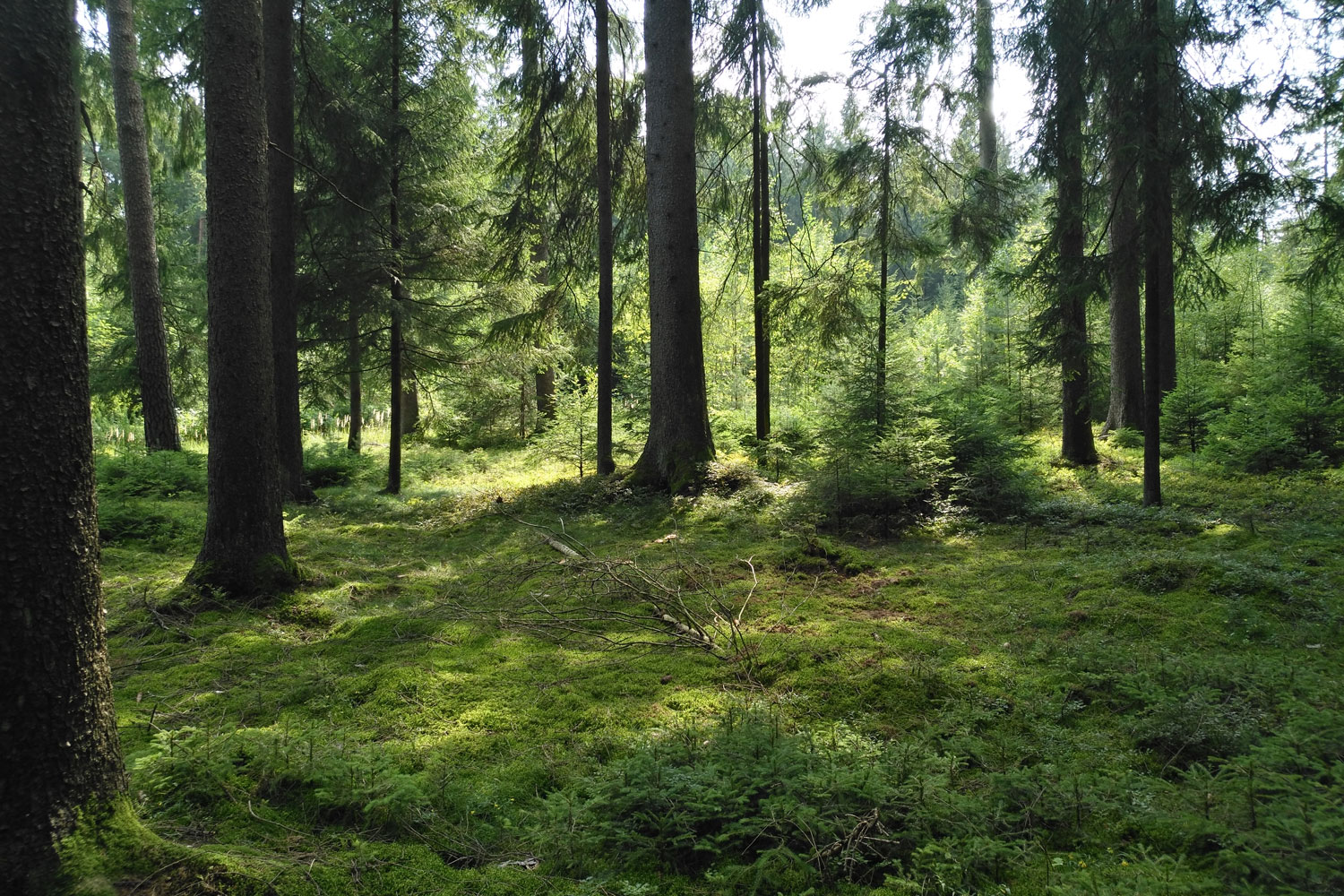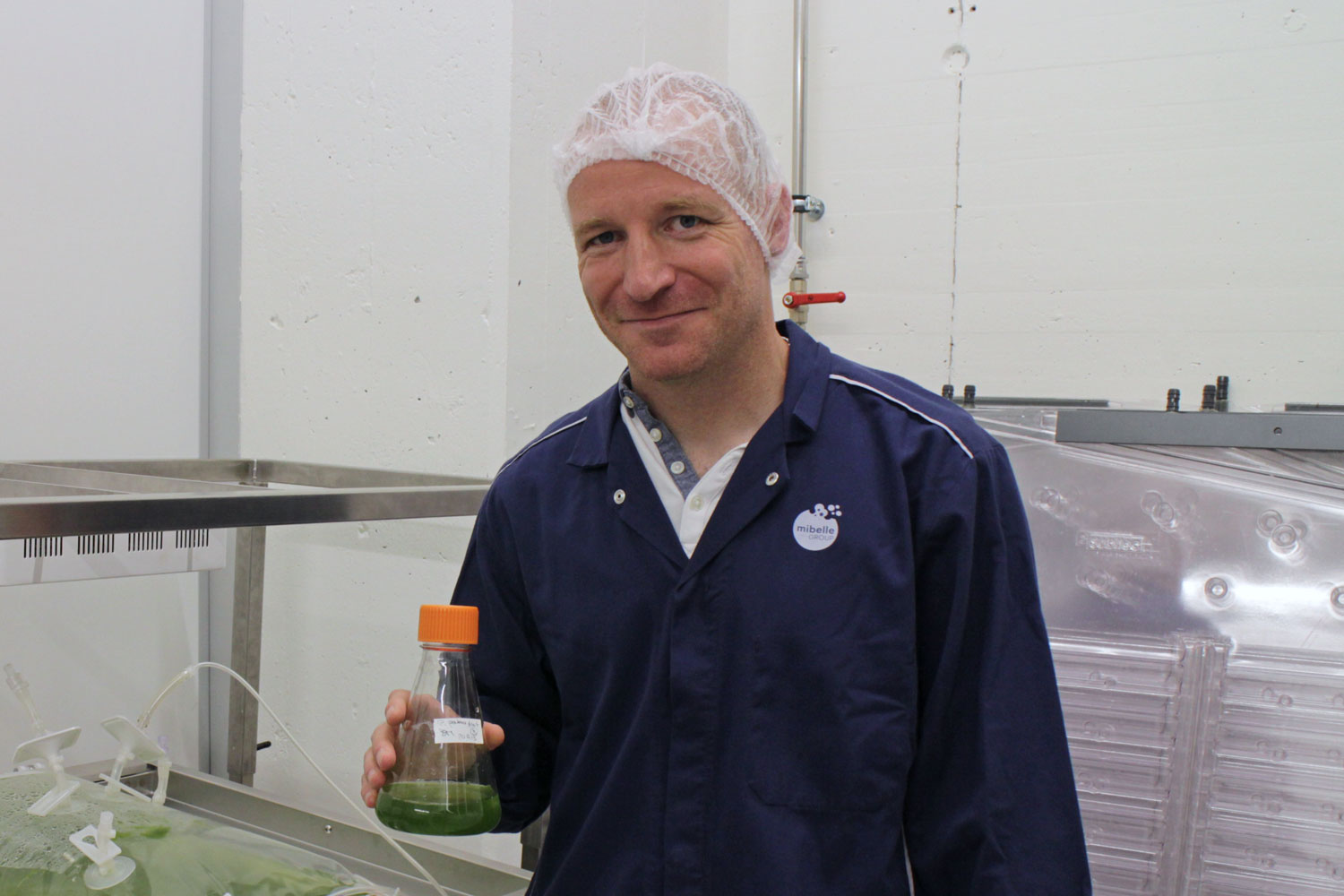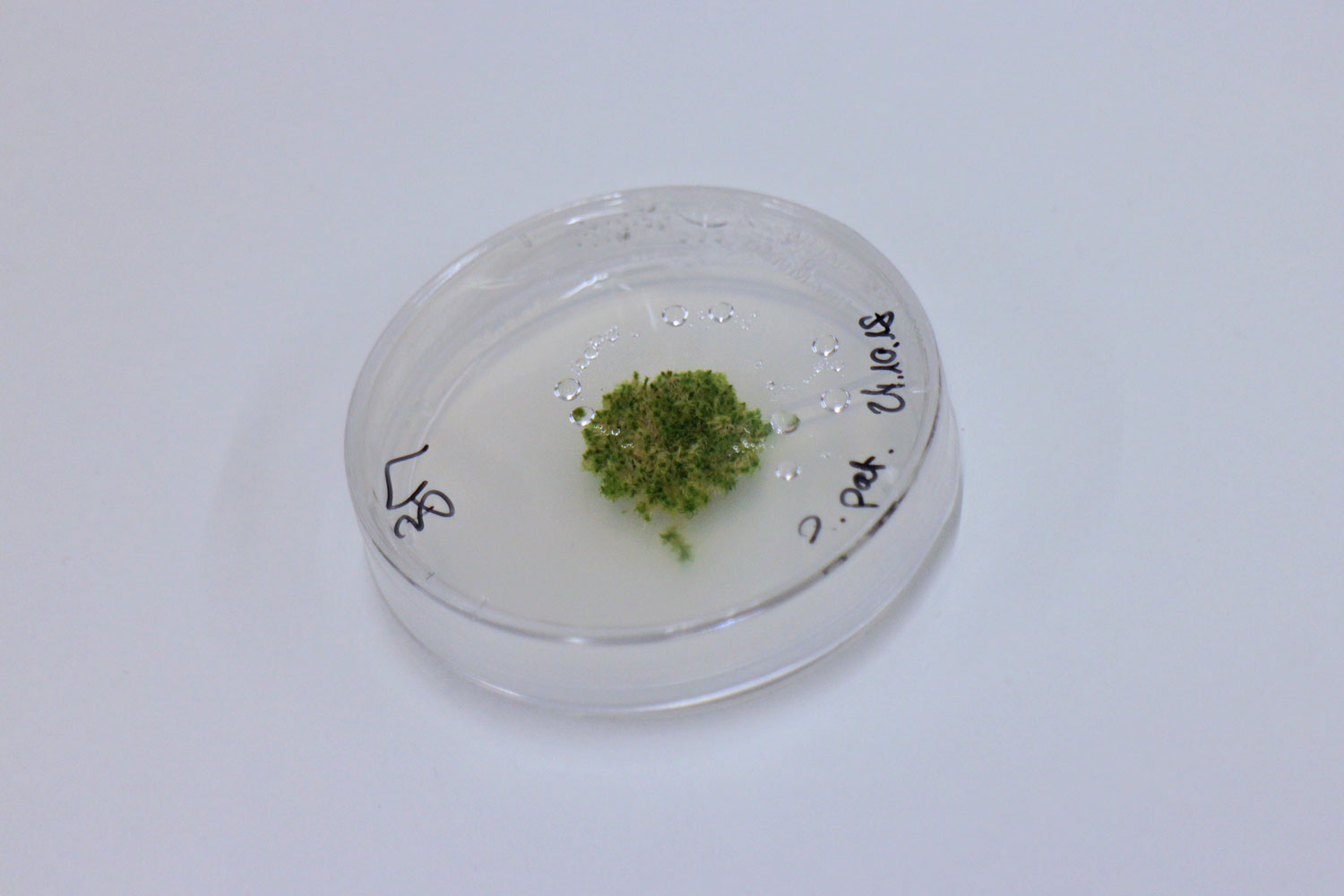This is a translation of my German blogpost Hinter den Beauty-Kulissen… ProTec Ingredia GmbH Proudly Presents: Moos als Kosmetik-Wirkstoff? Enjoy!
In cooperation with ProTec Ingredia // Walking on mossy forest soil feels wonderful, it’s so soft and springy! At the same time mosses are so tiny that we rarely look at them in more detail. I always associated moss with damp areas that stay green even in winter, and that was pretty much it. On my recent trip to Swiss raw ingredients manufacturer Mibelle Biochemistry, however, I got to know a whole new side of moss. “Small and green“ doesn’t even begin to describe these amazing plants: mosses are true survival artists – and they’re not that easy to source either.
Development of innovative active ingredients
After my interview with Mibelle Biochemistry‘s founder Dr. Fred Zülli I’m visiting chemist Bernhard Henes in the company‘s R&D department – you can see Bernhard on the photo above. Before joining the company six years ago Bernhard worked in the research department of a unversity. Together with seven colleagues he develops new raw ingredients and biotechnological processes for Mibelle Biochemistry.
Bernhard tells me that the majority of Mibelle Biochemistry’s raw ingredients are classic plant extracts. However, from the beginning he was fascinated by the potential of biotechnology, even though the effort associated with the development of cosmetic actives through biotechnological methods is considerable: you need at least 2-3 years of lead time before you have a viable ingredient, and only every third biotech-engineered ingredient will reach the final development stage.
Still, many innovative raw ingredients are only possible through the development of new manufacturing processes – and as I mentioned in the last chapter of my Beauty Soap, Mibelle Biochemistry is all about innovation. These new biotechnological manufacturing methods also offer several other advantages, such as sustainability and quality. Follow me into Bernhard’s lab to find out more!
Diving into the world of mosses
Mibelle Biochemistry’s interest in moss as a cosmetic ingredient was first triggered by the publication of several scientific studies. The University of Freiburg in Southern Germany is conducting basic research in the field of plant biology – and one of the key focus areas of Professor Ralf Reski, chair of the university’s Department of Plant Biotechnology, is the use of mosses for medical purposes.
Mosses were the first plants to colonise the earth 470 million years ago and today there are over 15,000 known types of moss. I was interested to learn that mosses are considered a speciality subject within the area of botany: they are even mapped which means that there are detailed databases listing the types of moss that grow in particular geographic regions. These databases also track how the different variants of moss change under the influence of the global climate change. Some species of moss are actually endangered now because their natural habitats are deteriorating so rapidly.
This is even more disturbing when you consider that mosses are extremely adaptable and tough: depending on the species they can survive direct sun exposure, intense heat, bitter cold or deep snow; there are even types of moss that can resist microbial attacks. As a result mosses grow in almost every climate zone, from arid deserts over cold regions like the tundra to mountain ranges that are higher than 6,000 metres; some mosses grow on actual stone and they can also survive in polluted cities. Even if mosses are covered in snow or ice for 1,500 years they still continue to grow afterwards! Thanks to these extraordinary adaption strategies, mosses offer physiological properties that you won’t find in any other plant.
Mosses have also developed sophisticated strategies to deal with environmental pollution; they extract the necessary nourishment from the air and rain rather than the ground which means that they also bind heavy metals. In order to protect themselves against these toxic compounds mosses contain high levels of antioxidants and other protective substances – this is also the reason why they can survive for millions of years. In addition, mosses play an important role in maintaining the ecological balance because they absorb particulate matter or nitrogen oxide.
Fun Fact: You might be familiar with Irish moss (it’s rather well-known in Germany) – however, despite its name Irish Moss is not actually a moss but an algae.
Moss in beauty?
All of these intriguing characteristics made Mibelle Biochemistry very curious: if such a tiny plant can survive so many aggressive environmental factors it should be interesting to find out what it can do in cosmetic products! After the initial evaluation and further analysis and research it quickly became clear that here was an entirely new anti-ageing concept.
For the development of its new active ingredient Mibelle Biochemistry selected the moss variant Physcomitrella patens. This moss is frequently used as a model plant in moss research and Bernhard becomes almost lyrical on the topic of Physcomitrella patens: “It is such a beauty when you look at it under the microscope!”
But how do you collect enough plant material to work with? When mosses grow they develop so-called protonema (young shoots) which turn into a kind of moss carpet. However, mosses grow very slowly, their life cycle can take up to five years. The researchers at Mibelle soon realised that wild harvesting of moss wasn’t a viable option: the process of harvesting would have destroyed too much of the plant’s natural habitat.
There is also another problem: wild mosses – i.e. mosses that grow in nature – often harbour parasites, funghi and other organisms. In order to get an extract pure enough to be used in beauty products the wild plant would need to undergo an elaborate cleansing process.
If using wild mosses is impossible you could always start your own organic moss plantation, right? Well, unfortunately this plan isn’t practical either: one of the more admirable properties of mosses – the fact that they derive nourishment from the air rather than the ground – means that cultivating moss in organic quality is almost impossible. Even if you were to grow moss according to the strictest of organic agricultural guidelines you simply can‘t control the toxic substances that mosses absorb from the air. Many animals won’t eat moss, by the way, because it is often contaminated with heavy metals or nitrogen oxide.
It seems that there’s a good reason why moss is still a comparatively rare ingredient in cosmetics: it is difficult to collect the raw material sustainably and responsibly. So, how does Mibelle Biochemistry manage to source this elusive and interesting ingredient?
While Mibelle Biochemistry continues to work in the lab – which requires a lot of time – ProTec Ingredia and I are paying another visit to Codif in Britanny. Stay tuned!





